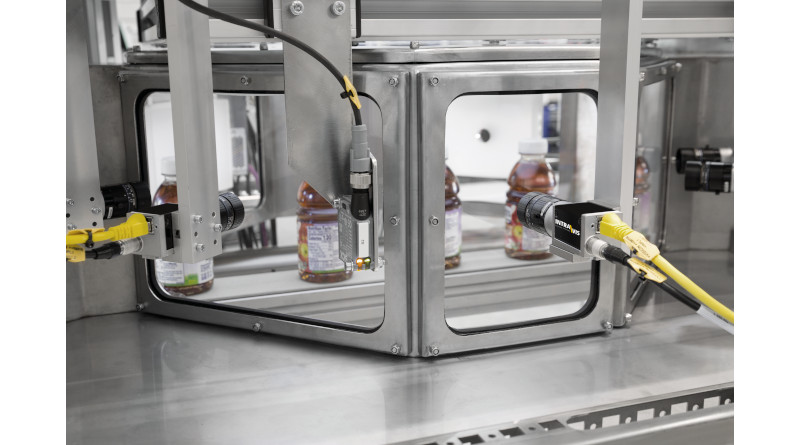Inspecting closures on filled bottles
Intravis GmbH is known for its vision inspection systems for plastic packaging. Many manufacturers of closures are familiar with the company’s systems such as the CapWatcher Q-Line. Not as well known is that Intravis also has a portfolio system explicitly for closure inspection in the wet area of filling lines: the CapWatcher FC. This posed exciting challenges to the CapWatcher development team of Intravis.
The design
First of all, it was clear that a specific system design was needed for an inspection behind the filling and capping process. Marius Pötting, Intravis product manager for closure systems, was involved in the development of the CapWatcher FC from the very beginning: “Post-filling and capping systems have to cope with completely different requirements. In particular, cleaning the system has to work conveniently and also in a fast and reliable way. Of course, the inspection system has to be resistant against standard cleaning processes on the market to entirely meet the customers’ hygienic demands.”
The CapWatcher FC is equipped accordingly: A stainless steel housing which enables cleaning the system from the outside with a water jet; improved seals that can cope with aggressive cleaning methods, too and cameras that are protected from any contact to liquids thanks to transparent partition walls. All these features allow the system to be cleaned both externally and internally using typical cleaning methods for filling lines. This applies to the inspection unit and the control cabinet, which meets with the hygienic requirements of the filling companies accordingly.
Inspection
The inspection scope of a system for already applied closures differs compared to the scope of systems designed for the inspection in closure production lines, for example. In addition to inspecting for damage, presence and correct positioning of the applied closure, the fill level of the bottle is also examined. The highlight among the inspections, however, is the verification of the application angle. The CapWatcher FC uses index marks to inspect whether the closure is screwed down to its target position – or whether it is screwed down too far or not far enough. Therefore, marks on the closure and on the neck support ring that are barely perceptible to the end user are detected by the system. If the relative angular position of these marks is within a tolerated range, the system assumes that the closure has been completely and correctly applied, and the bottle is released for packaging.
Handling the quality data collected
As much as Intravis systems differ in their design and scope of inspection, they are similar with regards to handling the collected quality data: These are used for optimisation, especially for monitoring and improving the processes of upstream systems like filling and capping, to guarantee a flawless procedure. This means for the CapWatcher FC: Information obtained on the closure fit – e.g., on the closure position and application angle can be used to draw conclusions on the capping process. Defects can even be traced back specifically to each individual tool, offering the possibility of targeted intervention and optimised predictive maintenance. Additionally, the information obtained from the fill level verification can be used to draw conclusions about the performance of specific filling tools to ensure a smooth filling process.
Even though the systems of the CapWatcher family at Intravis basically have the same focus for the inspection, namely closures, there are still many differences due to the challenges of their dedicated application areas. In both the design and the inspection scope of the CapWatcher FC, the Intravis development team has used previous experiences as well as completely new findings. Additionally, Intravis is already in the process of applying this knowledge to other products in the portfolio. As of this year, the LabelWatcher, an inspection system for the quality control of pressure-sensitive labels, is also available in a Washdown Design and thus available for wet areas.

